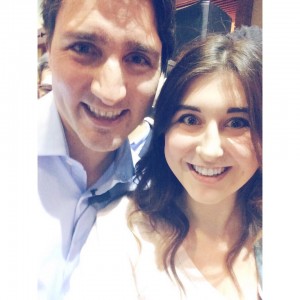As promised in my post from last week ,
today I will continue my application of in-class concepts from the Coordinated Arts Program courses to Justin Trudeau’s speech at UBC on March 4th 2015. While I began by analyzing the way Mr Trudeau introduced himself and his party’s platform in relation to his geographical location, today I will look at the way he addressed an issue that is extremely important to Canada: the missing and murdered Aboriginal women.
The systematic discrimination experienced by the Aboriginal community in Canada is a problem that has been discussed extensively in the CAP Sociology and Art Studies classes. During the question period, one student asked Justin Trudeau for the Liberal party’s stance on the unresolved issue of missing and murdered Aboriginal women, to which he answered that “the fact that we…still haven’t generated the political will to do what needs to be done is a stain upon every one of us as Canadians.”
I paused when he continued by explaining that these women are (or could be) the sisters, mothers, and daughters of Canadians because it reminded me of a blog post discussed in class, I Am Not Your Wife, Sister or Daughter. The post challenges the conventional rhetoric of humanizing victimized women by defining their value to those around them, rather than their value as people in the first place. Mr Trudeau’s comment was designed to draw empathy, but instead made me wonder why we must be reminded of our potential connection to these women in order to care about their fate. I also reflected on the multitude of larger issues engrained in our society that are not addressed when the missing and murdered Aboriginal women’s case is referred to so briefly in a political speech.
As discussed in my Sociology discussion group, the causes for high rates of Aboriginal unemployment, addiction, prostitution and poverty are the result of a long history of discrimination. This video by the Public Service Alliance of Canada, from an Aboriginal perspective, outlines key events such as the signing of the Indian Act, the creation of land reserves and the establishment of residential schools to explain how Aboriginal communities have suffered yet continue to be resilient.
Justin Trudeau ended his answer to the student’s question by stating that he was proud that the Liberal party is “drawing together extraordinarily wide range of strong voices from the Aboriginal community to be part of the next government in Canada,” and this representation through politics is a key step forward in addressing a multitude of complex issues.
Much as is presented in Jiwani & Young’s article “Missing and Murdered Women: Reproducing Marginality in News Discourse,” discussing this tragedy separately from historically entrenched racism and cultural assimilation makes no room for finding systematic solutions. Instead, the issue is being isolated and stigmatized by those that are powerful enough to define it. For this reason, politicians and citizens alike need to be mindful about how they discuss issues faced by Aboriginal communities in order to support more in-depth and productive discussion, and more room needs to be made to hear the voices of people from those communities.
